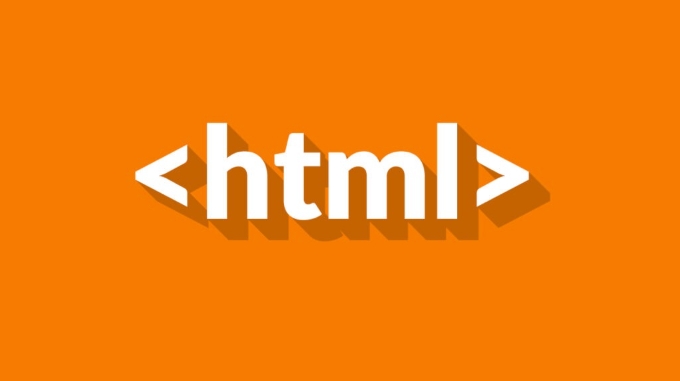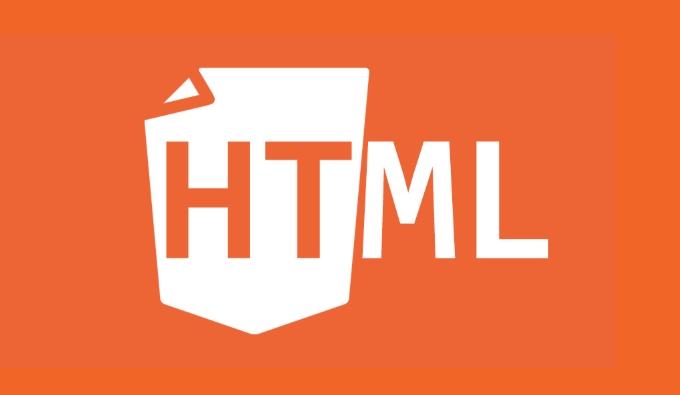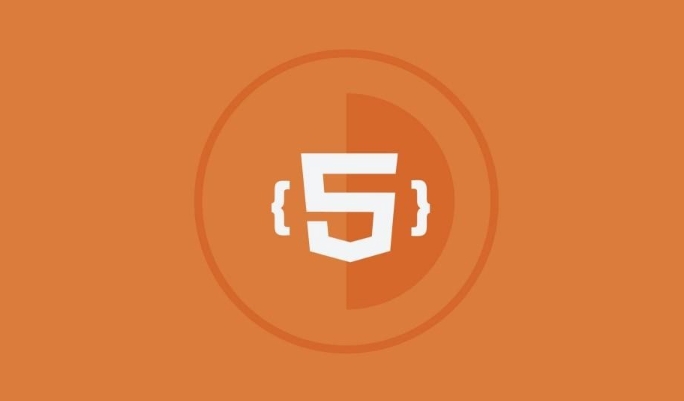The viewport meta tag is used to control how web pages are displayed on mobile devices and ensure that the pages are adapted to the screen. Its core function is to prevent the browser from rendering the page with desktop width, making the text too small and the layout compact. The correct way to set it is to add <meta name="viewport" content="width=device-width, initial-scale=1"> in the HTML
, where width=device-width sets the page width equal to the device width, and initial-scale=1 sets the initial scaling ratio to 1. Optional parameters include maximum-scale limiting maximum magnification, user-scalable control whether manual scaling is allowed, but disabling scaling is not recommended. Common problems include fixed-width layout, third-party plug-ins affect responsive design, wrong setting of scaling parameters, etc. The key to the solution lies in the overall adoption of responsive design principles.
The viewport meta tag in HTML is a key element used to control how web pages are displayed on mobile devices. Simply put, it tells the phone browser how to scale and resize the page to fit the screen.

Why do mobile terminals need to set viewport?
When you open a web page on your phone that does not set the viewport correctly, the browser usually uses "desktop width" to render the page (such as 980px) and then narrows the page and displays it on the screen. The result is that the text is too small and the layout is compact, and users must manually enlarge it to see the content clearly.

After setting up a suitable viewport, the web page can be adapted according to the actual screen size of the device, providing a more friendly browsing experience.
How to use the viewport meta tag correctly?
The basic way to write viewport is to add the following code to the area of ??HTML:

<meta name="viewport" content="width=device-width, initial-scale=1">
Here are two key parameters:
-
width=device-width: Make the width of the page equal to the screen width of the device. -
initial-scale=1: Set the initial scaling ratio to 1 to ensure that the page is not automatically scaled.
You can also add some extra options, such as:
-
maximum-scale=1: limits the maximum enlargement of the user. -
user-scalable=no: prohibits user scaling manually (but this is generally not recommended).
These settings can be flexibly combined according to website needs, but in most cases it is just to keep it simple.
Frequently Asked Questions and Precautions
Sometimes even if the viewport tag is added, the page still displays an exception. Common reasons include:
- There is a fixed width layout in the page (such as width: 960px is set), which will make it impossible to adapt on small screens.
- Third-party ads or plug-ins ignore responsive design, destroying the overall layout.
- The maximum-scale or user-scalable is set incorrectly, affecting the user experience.
The key to solving these problems is to ensure that the entire page adopts responsive design principles, rather than just adding a viewport tag.
Basically that's it. Although viewport is just a line of code in HTML, it is crucial for mobile display. Many people tend to ignore it at the beginning, and they don’t check it until the page looks weird on their phones. In fact, just remember one thing: if the mobile terminal needs to adapt to the screen, it has to rely on viewport to enable this ability.
The above is the detailed content of What is the viewport meta tag in HTML for?. For more information, please follow other related articles on the PHP Chinese website!

Hot AI Tools

Undress AI Tool
Undress images for free

Undresser.AI Undress
AI-powered app for creating realistic nude photos

AI Clothes Remover
Online AI tool for removing clothes from photos.

Clothoff.io
AI clothes remover

Video Face Swap
Swap faces in any video effortlessly with our completely free AI face swap tool!

Hot Article

Hot Tools

Notepad++7.3.1
Easy-to-use and free code editor

SublimeText3 Chinese version
Chinese version, very easy to use

Zend Studio 13.0.1
Powerful PHP integrated development environment

Dreamweaver CS6
Visual web development tools

SublimeText3 Mac version
God-level code editing software (SublimeText3)
 Applying Semantic Structure with article, section, and aside in HTML
Jul 05, 2025 am 02:03 AM
Applying Semantic Structure with article, section, and aside in HTML
Jul 05, 2025 am 02:03 AM
The rational use of semantic tags in HTML can improve page structure clarity, accessibility and SEO effects. 1. Used for independent content blocks, such as blog posts or comments, it must be self-contained; 2. Used for classification related content, usually including titles, and is suitable for different modules of the page; 3. Used for auxiliary information related to the main content but not core, such as sidebar recommendations or author profiles. In actual development, labels should be combined and other, avoid excessive nesting, keep the structure simple, and verify the rationality of the structure through developer tools.
 Implementing Clickable Buttons Using the HTML button Element
Jul 07, 2025 am 02:31 AM
Implementing Clickable Buttons Using the HTML button Element
Jul 07, 2025 am 02:31 AM
To use HTML button elements to achieve clickable buttons, you must first master its basic usage and common precautions. 1. Create buttons with tags and define behaviors through type attributes (such as button, submit, reset), which is submitted by default; 2. Add interactive functions through JavaScript, which can be written inline or bind event listeners through ID to improve maintenance; 3. Use CSS to customize styles, including background color, border, rounded corners and hover/active status effects to enhance user experience; 4. Pay attention to common problems: make sure that the disabled attribute is not enabled, JS events are correctly bound, layout occlusion, and use the help of developer tools to troubleshoot exceptions. Master this
 Configuring Document Metadata Within the HTML head Element
Jul 09, 2025 am 02:30 AM
Configuring Document Metadata Within the HTML head Element
Jul 09, 2025 am 02:30 AM
Metadata in HTMLhead is crucial for SEO, social sharing, and browser behavior. 1. Set the page title and description, use and keep it concise and unique; 2. Add OpenGraph and Twitter card information to optimize social sharing effects, pay attention to the image size and use debugging tools to test; 3. Define the character set and viewport settings to ensure multi-language support is adapted to the mobile terminal; 4. Optional tags such as author copyright, robots control and canonical prevent duplicate content should also be configured reasonably.
 Best HTML tutorial for beginners in 2025
Jul 08, 2025 am 12:25 AM
Best HTML tutorial for beginners in 2025
Jul 08, 2025 am 12:25 AM
TolearnHTMLin2025,chooseatutorialthatbalanceshands-onpracticewithmodernstandardsandintegratesCSSandJavaScriptbasics.1.Prioritizehands-onlearningwithstep-by-stepprojectslikebuildingapersonalprofileorbloglayout.2.EnsureitcoversmodernHTMLelementssuchas,
 How to associate captions with images or media using the html figure and figcaption elements?
Jul 07, 2025 am 02:30 AM
How to associate captions with images or media using the html figure and figcaption elements?
Jul 07, 2025 am 02:30 AM
Using HTML sums allows for intuitive and semantic clarity to add caption text to images or media. 1. Used to wrap independent media content, such as pictures, videos or code blocks; 2. It is placed as its explanatory text, and can be located above or below the media; 3. They not only improve the clarity of the page structure, but also enhance accessibility and SEO effect; 4. When using it, you should pay attention to avoid abuse, and apply to content that needs to be emphasized and accompanied by description, rather than ordinary decorative pictures; 5. The alt attribute that cannot be ignored, which is different from figcaption; 6. The figcaption is flexible and can be placed at the top or bottom of the figure as needed. Using these two tags correctly helps to build semantic and easy to understand web content.
 HTML for email templates tutorial
Jul 10, 2025 pm 02:01 PM
HTML for email templates tutorial
Jul 10, 2025 pm 02:01 PM
How to make HTML mail templates with good compatibility? First, you need to build a structure with tables to avoid using div flex or grid layout; secondly, all styles must be inlined and cannot rely on external CSS; then the picture should be added with alt description and use a public URL, and the buttons should be simulated with a table or td with background color; finally, you must test and adjust the details on multiple clients.
 What are the most commonly used global attributes in html?
Jul 10, 2025 am 10:58 AM
What are the most commonly used global attributes in html?
Jul 10, 2025 am 10:58 AM
class, id, style, data-, and title are the most commonly used global attributes in HTML. class is used to specify one or more class names to facilitate style setting and JavaScript operations; id provides unique identifiers for elements, suitable for anchor jumps and JavaScript control; style allows for inline styles to be added, suitable for temporary debugging but not recommended for large-scale use; data-properties are used to store custom data, which is convenient for front-end and back-end interaction; title is used to add mouseover prompts, but its style and behavior are limited by the browser. Reasonable selection of these attributes can improve development efficiency and user experience.
 How to handle forms submission in HTML without a server?
Jul 09, 2025 am 01:14 AM
How to handle forms submission in HTML without a server?
Jul 09, 2025 am 01:14 AM
When there is no backend server, HTML form submission can still be processed through front-end technology or third-party services. Specific methods include: 1. Use JavaScript to intercept form submissions to achieve input verification and user feedback, but the data will not be persisted; 2. Use third-party serverless form services such as Formspree to collect data and provide email notification and redirection functions; 3. Use localStorage to store temporary client data, which is suitable for saving user preferences or managing single-page application status, but is not suitable for long-term storage of sensitive information.






